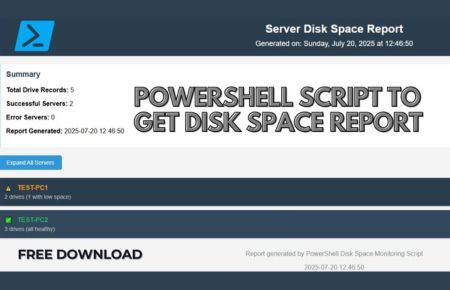Helpdesk and Project Management Software
In the dynamic and competitive landscape of modern business, organizations are continually seeking innovative solutions to improve efficiency, collaboration, and overall productivity. Two indispensable tools that have emerged as cornerstones of operational excellence are helpdesk and project management software.
This article delves deep into the multifaceted benefits of integrating these two software solutions and explores how their synergy can significantly elevate organizational performance.
Helpdesk Software
Helpdesk software stands at the forefront of customer support and issue resolution. Its primary objective is to centralize customer inquiries, automate ticketing processes, and ensure timely responses to user concerns. By incorporating a helpdesk system, businesses can maintain high levels of customer satisfaction through efficient problem-solving and seamless communication between support teams and end-users.
Key Features of Helpdesk Software
Ticketing System: The heart of any helpdesk, a robust ticketing system efficiently manages customer issues by centralizing and organizing support requests.
Knowledge Base: Empower users with self-service options by creating a repository of articles, FAQs, and troubleshooting guides, reducing the volume of support requests.
Automation: Streamline workflows by automating repetitive tasks and responses, ultimately improving response times and optimizing resource allocation.
Collaboration Tools: Foster internal communication among support teams, promoting collaboration, and facilitating knowledge-sharing for more effective issue resolution.
Project Management Software
Complementary to helpdesk software, project management tools play a pivotal role in planning, organizing, and executing projects. They enable teams to create schedules, assign tasks, track progress, and ensure projects are completed on time and within budget. Project management software promotes effective collaboration, resource management, and transparency into project workflows.
Key Features of Project Management Software
Task Management: Break down projects into manageable tasks, assign responsibilities, and track progress to ensure that every aspect of a project is on schedule.
Collaboration: Facilitate seamless communication and collaboration among team members, promoting an efficient exchange of ideas and information.
Resource Allocation: Optimize resource allocation by tracking team members’ workloads and ensuring tasks are assigned based on skills and availability.
Gantt Charts: Visualize project timelines and dependencies with Gantt charts, enabling teams to manage complex projects more effectively.
The Synergy of Helpdesk and Project Management Software
The true potential for organizational transformation lies in the seamless integration of helpdesk and project management software. This synergy creates a cohesive ecosystem that enhances overall operational efficiency and productivity. The benefits of this integration are manifold:
Unified Communication: Integrating helpdesk and project management software ensures seamless communication between support and project teams. This cohesion reduces the likelihood of misunderstandings and delays.
Efficient Issue Resolution: The integration allows for a smooth transition from identifying customer issues to implementing solutions, ensuring a swift and effective problem-resolution process.
Improved Project Planning: Access to customer feedback and support data within the project management system empowers teams to make informed decisions, resulting in more accurate project planning and resource allocation.
Enhanced Reporting and Analytics: Combined data from helpdesk and project management tools offer valuable insights into performance metrics. This data-driven approach enables organizations to identify areas for improvement and make informed decisions.
Popular Helpdesk and Project Management Software
Zendesk: A leading helpdesk solution with a range of features for efficient customer support. Zendesk
Asana: A versatile project management tool that facilitates effective collaboration and task management. Asana
Jira Service Management: Combines helpdesk and project management capabilities, particularly suited for IT and development teams. Jira Service Management
Trello: Known for its visual project management approach, Trello is a user-friendly tool that fosters collaboration. Trello
Zendesk: Elevating Customer Support with Comprehensive Features
Zendesk stands out as a leading helpdesk solution renowned for its commitment to delivering efficient customer support. Its comprehensive set of features empowers businesses to provide timely and effective assistance to their clients, thereby enhancing overall customer satisfaction.
Key Features of Zendesk:
Multichannel Support: Zendesk allows businesses to consolidate customer queries from various channels, including email, chat, phone, and social media, into a centralized platform. This ensures a unified and streamlined approach to customer communication.
Ticketing System: The robust ticketing system in Zendesk helps organize and prioritize customer issues effectively. It ensures that every support request is tracked, assigned, and resolved systematically.
Automation and Workflow: Zendesk’s automation capabilities reduce manual tasks, enabling support teams to focus on more complex issues. Automated workflows enhance efficiency by routing tickets to the right agents and providing instant responses to common queries.
Knowledge Base: With Zendesk’s knowledge base, businesses can create and maintain a repository of articles, FAQs, and tutorials. This empowers customers to find answers independently, reducing the volume of support tickets and enhancing the overall customer experience.
Analytics and Reporting: Zendesk provides in-depth analytics and reporting tools that offer valuable insights into support team performance, customer satisfaction, and emerging trends. This data-driven approach enables businesses to make informed decisions to improve their support processes continually.
Asana: Unleashing Collaborative Power for Project Management
Asana is a versatile project management tool designed to facilitate effective collaboration and task management. Its user-friendly interface and robust features make it a go-to choice for teams looking to streamline project workflows and enhance overall productivity.
Key Features of Asana:
Task Management: Asana enables teams to break down complex projects into manageable tasks. Users can assign responsibilities, set due dates, and track progress, providing a clear overview of project status and individual contributions.
Collaboration Hub: With a central hub for communication, teams can collaborate seamlessly within Asana. The platform supports comments, file attachments, and real-time updates, fostering efficient communication and ensuring everyone is on the same page.
Project Planning: Asana’s intuitive project planning features, including timelines and boards, allow teams to visualize project progress and dependencies. This visual approach enhances planning accuracy and makes it easier to adapt to changing project requirements.
Integrations: Asana integrates with a variety of third-party tools, enhancing its functionality and adaptability. This ensures that teams can work with their preferred tools while still enjoying the benefits of a centralized project management platform.
Automation: Asana’s automation features enable teams to automate repetitive tasks, reducing manual effort and improving overall efficiency. This includes automating task assignments, status updates, and reminders.
Jira Service Management: Unifying IT and Development Processes
Jira Service Management is a powerful solution that seamlessly combines helpdesk and project management capabilities, making it particularly well-suited for IT and development teams. By unifying these critical functions, Jira Service Management provides a holistic approach to managing projects and supporting customers.
Key Features of Jira Service Management:
Incident and Problem Management: Jira Service Management excels in incident and problem management, allowing teams to identify, prioritize, and resolve issues efficiently. This is crucial for maintaining the stability and reliability of IT services.
Change Management: The platform supports change management processes, enabling teams to plan, implement, and track changes systematically. This ensures that modifications to systems and services are executed with minimal disruption.
Integration with Jira Software: Jira Service Management seamlessly integrates with Jira Software, creating a unified environment for development and support teams. This integration ensures that issues reported by customers can be directly linked to development tasks and vice versa.
Knowledge Base and Self-Service Portals: Jira Service Management includes robust knowledge base features and self-service portals. This empowers users to find solutions independently, reducing the burden on support teams and improving the overall customer experience.
Automation Rules: Automation is a key strength of Jira Service Management, allowing teams to create rules and workflows that automate routine tasks. This streamlines processes reduces response times, and enhances overall operational efficiency.
Trello: Visualizing Workflows for Enhanced Collaboration
Trello is renowned for its visual project management approach, providing users with a user-friendly and intuitive platform to foster collaboration. Its visually appealing boards and cards make it easy for teams to organize tasks, track progress, and collaborate seamlessly.
Key Features of Trello
Boards and Cards: Trello’s boards and cards offer a visual representation of project workflows. Teams can create boards for different projects and use cards to represent tasks, making it easy to understand and manage project progress.
Drag-and-Drop Interface: The platform’s drag-and-drop interface allows users to move cards between different lists, representing different stages of a project. This flexibility makes it easy to adapt to changing project requirements.
Collaboration and Comments: Trello facilitates collaboration through comments on cards. Team members can discuss tasks, share updates, and provide feedback directly within the platform, fostering transparent communication.
Checklists and Due Dates: Trello supports checklists and due dates within cards, helping teams break down tasks into manageable steps and ensure that deadlines are met. This aids in effective task management and project planning.
Power-Ups: Trello’s Power-Ups extend its functionality by integrating with third-party tools. Teams can customize their Trello boards with Power-Ups to add features like calendars, integrations with file-sharing platforms, and more.
Conclusion
In the ever-evolving landscape of business operations, the importance of specialized software solutions cannot be overstated. Zendesk, Asana, Jira Service Management, and Trello each bring a unique set of features and capabilities to the table, addressing specific needs in customer support and project management. By incorporating these tools into their workflows, organizations can optimize their operations, enhance collaboration, and ultimately position themselves for sustained success in today’s competitive environment.
Thank You for Visiting our website TechsBucket. If you liked the article, then share it with others.


